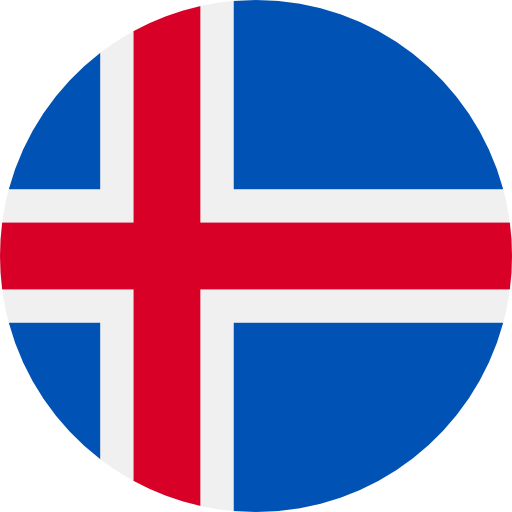
- Home
- Coin Values
- Regions
- Spot Silver Price: $70.38

Silver coins were in regular circulation in Iceland. The values below represent the intrinsic value of silver coins from Iceland.
Iceland silver coins that are in uncirculated condition, or that may be rare and collectible may also have numismatic value. You can use this table as a guide when buying and selling circulated silver coins from Iceland.
The melt values are calculated and displayed in USD based on the today's silver spot price of $70.38 per troy ounce.
| Denomination / Currency | Years Minted | Fineness | Gross Weight (g) | ASW (g) | ASW (oz t) | Melt Value |
|---|---|---|---|---|---|---|
| 500 Kronur | 1974 | .925 | 20 | 18.50 | .5948 | $41.86 |
| 1000 Kronur | 1974 | .925 | 30 | 27.75 | .8922 | $62.79 |
The history of silver coins in Iceland is a fascinating journey through the nation's monetary and economic developments. Iceland, being a relatively isolated island nation in the North Atlantic, has a unique history when it comes to coinage and currency.
During the medieval period, Iceland was heavily influenced by Norse culture and trade. The earliest form of currency used in Iceland was likely silver bullion and foreign coins, brought by Viking traders and settlers. These coins were not minted in Iceland but were used in trade and as a store of value. The Norse settlers often relied on silver as a means of exchange, and hoards of silver coins, known as "hack silver," have been found in archaeological sites across Iceland.
In the 19th century, Iceland was under Danish rule, and the Danish silver rigsbankdaler was the primary currency used. The rigsbankdaler was a silver coin that circulated widely in Denmark and its territories, including Iceland. These coins were an essential part of the Icelandic economy during this period, facilitating trade with Denmark and other countries.
In 1918, Iceland became a sovereign state in personal union with Denmark, and in 1922, the Icelandic króna (ISK) was introduced as the national currency. The króna replaced the Danish rigsbankdaler at par. Initially, Icelandic coins were minted in Denmark and bore the image of the Danish king. Silver coins, such as the 10 and 25 aurar, were part of this new currency system.
In the mid-20th century, like many other countries, Iceland began to move away from silver coinage due to the rising cost of silver and the need for more practical and cost-effective materials. By the 1960s, most of the Icelandic coins were made from base metals such as copper-nickel and aluminum-bronze. This marked the end of the circulation of silver coins in Iceland.
In recent years, silver coins have made a comeback in Iceland, primarily in the form of commemorative and collector's coins. These coins are often issued to celebrate significant national events, anniversaries, and cultural heritage. While they are legal tender, they are not intended for general circulation but rather for collectors and investors.